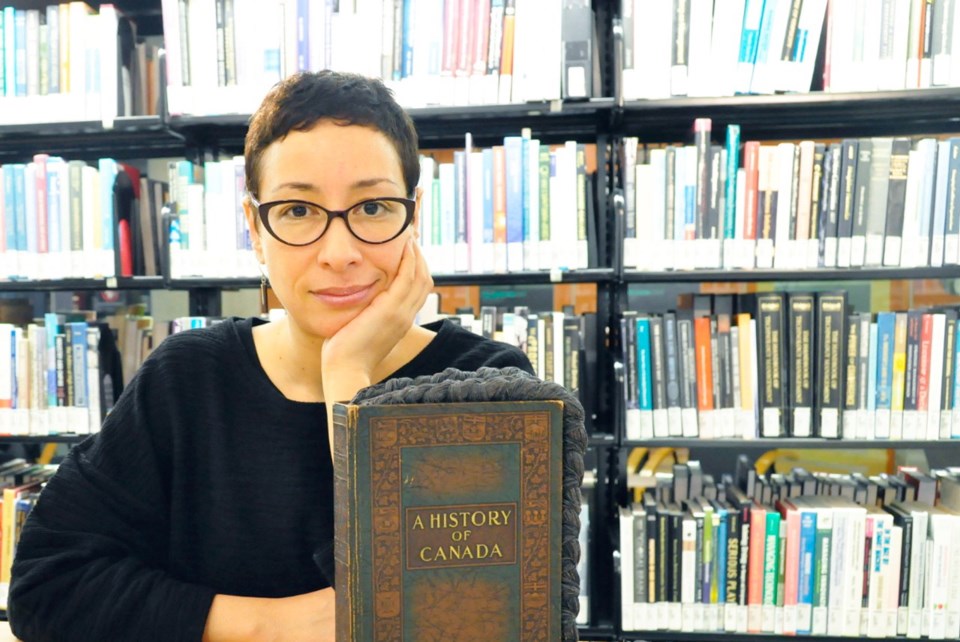What: How She Read: Confronting the Romance of Empire
Where: Open Space, 510 Fort St.
When: Jan. 13 through Feb. 26
Admission: Free or by donation
Note: Gibson will be in residence at Open Space from Feb. 14-21
For artist and author Chantal Gibson, the material is often the message.
“I’m trying to give form to voices that were not written or inscribed or heard,” Gibson said. “It’s about taking everyday things and creating a form, and then creating a narrative around it.”
In the past, she has made books out of cotton and coffee — items synonymous with the slave trade and colonialism.
How She Read: Confronting the Romance of Empire, her upcoming installation at the Open Space gallery on Fort Street, along with her forthcoming book of critical poetry, How She Read, explores the representation of African-Canadian women in Canadian art and literature.
Literacy, how we learn to read and from what source material, is an important topic in this time of reconciliation, Gibson said.
“Part of the process was to go back and imagine books that my mom would have read when she was in school — old vocabulary spellers and history books,” Gibson said. “I started seeing this trope of racist, misogynist imagery. We know this exists, and though we are having conversations about colonialism and reconciliation, we should always be investigating not just the content of the book, but how that thing functions as a cultural object. If the story is not accurate and there is a voice missing, that’s an invitation for me to do something creative.”
Gibson’s mixed heritage has been a recurring theme in her work — her mother, who died when she was a teenager, was an African-Canadian with Nova Scotian roots; her father, whom she did not know well, was a white French-Canadian.
That background rises to the fore in How She Read: Confronting the Romance of Empire, which opens Sunday in Victoria and runs through Feb. 26.
“My mom’s understanding of the world is what I grew up with and what I knew. Part of this exercise has been trying to understand my own heritage. I’m one of those in-between kids of multiple cultures. And I’m trying to figure out my own place in the big picture.”
Pages of How She Read, with its images of people of colour in subservient positions, come to life writ large on the walls of the gallery. Lines of text taken from The Canadian Vocabulary Speller (1948) for Grade 4 students and the grade-school reader We Grow Up (1936) are presented with vast amounts of the vocabulary redacted — black lines erasing from the present what was so prevalent in the past. Other pages are joined by a sewing needle and black thread, giving the allusion of fraught beginnings.
“I’ve blown these little teeny, tiny things into huge posters,” Gibson said. “You have to look up to read them, so they place the viewer in the position of the child.”
Gibson, who is a lecturer in the school of interactive arts and technology at Simon Fraser University in Vancouver, is doing her best to combat what has been ingrained in our educational system, or at least offer some food for thought.
There are sections in How She Read on grammar, with poems about decolonization and imperialist ideas. She likens the result to an interrogation of the English language, which she considers “a container for imperialist ideology,” one that resulted in the black diaspora and scattering of African culture centuries ago.
“I make assumptions every day when I use this language. History books come already packed with ideas. I like unpacking those. Because I’m a teacher, my artwork is pedagogical, so I’m interested in making it accessible to folks to be able to have conversations.”
Following the opening this weekend, Gibson will return to Victoria for a residency that runs from Feb. 14 through Feb. 21.
Her projects will include a poetry reading at the University of Victoria’s McPherson Library at 2 p.m. on Feb. 16 and an artist talk/panel discussion at Open Space at 7:30 p.m. on Feb. 19.
Gibson will also hold open hours at the gallery during her residency, and she hopes students come by for a session.
“I’m making critical art pieces — they just live as they are. I’m not changing history. I’m trying to create conversations.”



